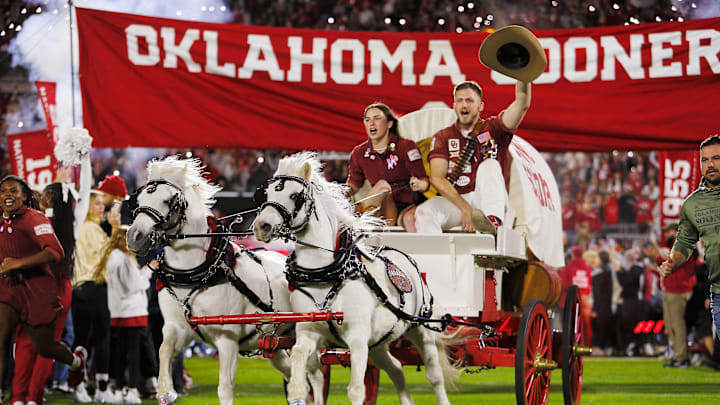We often hear teams in major college sports referred to a blue bloods of the sport. Like Kentucky, Kansas and North Carolina in basketball or Michigan, USC, Alabama and Notre Dame in football.
Many also consider Oklahoma a college football blue blood. But what really qualifies as a blue blood program or one we would consider to be royalty in the sport? Is it total wins? Number of national championships? Number of All-Americans or number of players who go on to play in the National Football League? How about the schools that began playing the game before anybody else?
The Meriam-Webster Dictionary defines "blue blood" as a member of a noble or socially prominent family. So in this sense, a blue blood college football program is one with a rich and storied tradition and history of success, which has afforded it long-standing prominence in the sport,
Rutgers and Princeton played in the first college football game of record on Nov. 6, 1869. At that time Princeton was known as the College of New Jersey. The game was actually played with a soccer ball, and the final score, 6-4, was more like a baseball score. These two schools represented the origin of college football in America, but neither institution is thought of today as a blue blood of the sport, and they don't meet the simple criteria of long-standing historic success or prominence in the game.
Oklahoma has been playing varsity football since 1895, 12 years before Oklahoma officially became a state and 26 years after the first college game was player There was only one game played that first Oklahoma season. The Sooners defeated an Oklahoma City town team 34-0.
Although OU has been playing football for 129 years, most all of its claim to fame and national prominence has come about since 1950. Since that time, also commonly referred to as the modern era of college football, the Sooners have been one of the winningest and most successful programs in college football.
Oklahoma ranks sixth all-time in wins with 944, including 27 11-win seasons (tied with Alabama for the most all-time) and 42 seasons with at least 10 wins (second all-time to Alabama with 43). Included in those 944 all-time wins are seven national championships in the poll era (since 1939), tied with USC for third most among NCAA Division I teams. The Sooners are tied with Ohio State and Notre Dame for the most Heisman Trophy winners with seven.
The Sooner clearly check the box for long-standing success in college football, and for those of who have been alive for the past seven-plus decades and can remember the Bud Wilkinson era of Oklahoma football -- arguably the time period that put Sooner football on the national map -- it's also pretty easy to say that OU has earned its place as a national brand in college football
So, yes, Oklahoma Sooner football deserves the reputation as one of the blue bloods of the sport. But who are the others, and where do the Sooners rank within that pantheon of nobility?
A few years back, ESPN posed the question of what are the most important programs -- or college royalty -- in the history of college football to a dozen of its staff writers. They rated every FBS school and awarded points (on a 1-10 scale) based on each school's overall impact on the history of college football.
Eight schools fell into a category the ESPN writers classified as "Blue Bloods." The top five programs in the exercise came up with perfect "10" scores. And for the most part, they were the schools you would come up with off the top of your head. Oklahoma was among those receiving a perfect score, along with Alabama, Notre Dame, Ohio State and USC.
Three others (Michigan, Texas, Nebraska) finished with 9.5 or better, and also made the group ESPN classified as a college football blue blood.
The staff at College Football news conducted a similar analysis in April of this year, ranking the 25 best football schools. The Sooners were No. 2 in that ranking, with No. 1 Alabama, No. 3 Michigan, No. 4 Ohio State and USC, Nebraska and Georgia rounding out the top seven.
